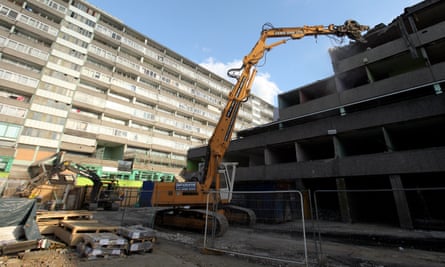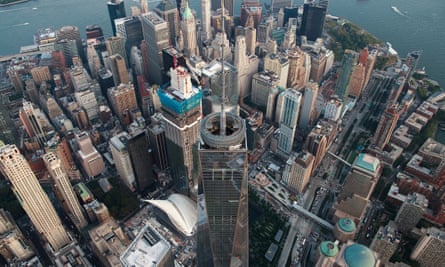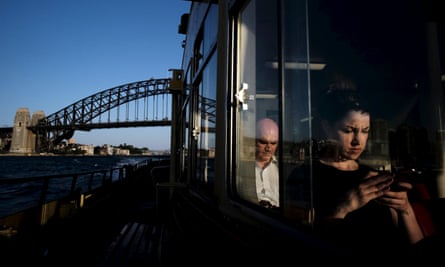As we’re all too aware, 2016 has been a strange and news-packed year. For cities around the globe, it’s been a year of challenges: worsening air pollution, increasing social divisions, community displacement, housing crises, resource shortages, environmental disasters and street violence – and for some, war and terrorism.
But cities have also been the stage where desire for change has been articulated, from the Black Lives Matter protests across US cities to anti-government marches in Brazil and the Nuit Debout sit-ins across French cities. Meanwhile, some cities have taken the lead in battling climate change and promoting social integration.
We asked a range of writers, architects and activists around the world to share their 2017 wishlist for their city – from better inclusivity in Accra to “walking school buses” in New York. Wherever you live, share your own wishes for urban change and improvement in the comments below.
London, UK
Oliver Wainwright, the Guardian’s architecture and design critic
Next year, I’d like to see the the return of council housing. Over the last decade, around 50 council estates across London have undergone regeneration, doubling the number of homes in the process. Swathes of inefficient postwar slabs have been intensified, or bulldozed and replaced with sparkling high-density visions. Surely this doubling of house numbers can only be a good thing – until you realise that it represents a loss of 8,000 council homes and the relentless displacement of existing communities, with the overall proportion of social and “affordable” rented homes reduced by a fifth.
I hope 2017 can finally see a reversal of this trend. For the first time in decades, the boroughs are building again, in many cases without relying on private development partners and their profit-hungry shareholders. Each is trying its own different model: from Croydon’s Brick by Brick programme, a private council-owned company set to build 1,000 new homes in the next three years (half for affordable rent and half for private sale) to Southwark’s ambition to build 11,000 new council homes by 2043. Yet too many of these plans are still predicated on a tabula rasa mindset, wiping the slate clean rather than remodelling existing estates and working intelligently with the value of what is already there.

London’s mayor, Sadiq Khan, described the mayoral election as a referendum on housing, and his recent draft guidance set out some pragmatic steps in the right direction. A third of all new homes will be set at “London affordable rent”, which will be around 44% of market rate, not up to 80% as it was defined under the previous mayor. The remainder will be shared ownership and “London living rent”, for the first time pegged to local income, rather than market rent. But Khan must get tougher on how councils approach their existing estates, which are too often thought of as “brownfield” land, and make them recognise the value in their bricks and mortar – and the people who actually live there.
Mumbai, India
Aditi Mittal, stand-up comedian, actress and writer
The fact that it’s a reigning punchline that 2016 was a terrible year makes my “glass-half-full” self believe that 2017 is a year in which things can only go up.
This is a pipe dream (literally), but one wish for my city is waterways. Mumbai has one of the longest coastlines in the world and with swathes of the city connectable by water, I really wish we had a water commute. Getting to work would be like a picnic if it started off with a boat ride everyday – I’d even risk the wet shoes if it means I wouldn’t have to sit in legendary Mumbai traffic. We named Mumbai after the Goddess of the Sea (Mumba Devi), so maybe we could appeal to her powers to reduce traffic and pollution on her land?
These days in Mumbai, you can’t turn a corner without smacking face first into a hoarding that promises “a home fit for royalty.” That’s great for them, but where does the common man go? Having a home is the acid test of our generation and I hope 2017 sees a kinder market towards the unfortunate or the tragically un-royal like myself.
Whenever something bad happens in Mumbai, we often use the words “Spirit of Mumbai” to describe how resilient the city is. This “spirit” is a euphemism for the fact that as people, we don’t trust the system and so we end up dependant on each other for survival and scraping through. This jaded fatalism is touted as our “spirit”. Next year, I hope we can work towards the physical manifestation of that spirit, to demand a better life from our politicians. That no matter our “spirit”, we realise that our “body” deserves better and we demand it.
Bring it on 2017. We’re primed.

New York, US
Saskia Sassen, sociologist and author
I love New York, but less than I used to. Manhattan is now at risk of becoming a monoculture – a jungle of luxury towers, more than half of them empty. There are rapidly disappearing low-income areas mostly in the south-east and north of Manhattan; but they are still cultural zones where interesting stuff is happening.
The larger city is vast. It should be multi-polar, with far more transversal transport – too much is still radial. There should be multiple economic centres, with more walking to one’s job. We should encourage local shops rather than bring in franchises – do we really need a multinational to have a cup of coffee in our neighbourhood?
Local talent in modest and low-income areas should be enabled. Simple digital systems can announce the knowledge and skills present in every neighbourhood – not simply the jobs people hold. I know janitors who are immigrants with medical degrees (waiting to get clearance). We should have “walking school buses”, as Seattle has, where children have a guarded walking path to their schools – thus reducing cars on the roads and improving safety. The list of minimalist interventions to improve urban life is long. They would make all the difference to modest neighbourhoods in a city where 50% of households are under the poverty line.
And then there is the urgent need to make each surface in a city work with the biosphere – policy is not enough. We have enough specialised knowledge in New York to make this happen (eg Terreform). No building in the city can simply be there to house something: there is more work to be done.
Tokyo, Japan
Kengo Kuma, architect
Tokyo is fidgeting at the moment. Most Japanese people believe optimistically that, at least until 2020, the economy will be fine and tourists numbers will continue to rise.
Based on this assumption, piles of hotels and commercial complexes are being built. But the buildings all look the same – they are being designed and erected like makeshift structures, as if to represent the attitude that “it’s OK as long as buildings can be finished by the 2020 Olympics”. I have no doubt that in 2017 we will see multitudes of urban development projects that could end up being nothing but garbage.
I believe the post-Olympics city will be calm, but silent and gloomy. The task for us is to create a Tokyo that can still gleam from the bottom.

Beirut, Lebanon
Joumana Haddad, poet, activist and writer
I dream of a city that nurtures our ambitions instead of slaying them in the womb. A city where racism has no place, and indifference is an impossible word.
I dream of a city where all women can walk without fear, dream without boundaries, and achieve without barriers. A city where men defend equal opportunities more vehemently than I do, and take pride in having capable partners instead of trophy wives.
I dream of a city with green spaces, sustainable energy and decent souls. A city where we’d finally have electricity 24/7, wouldn’t need to buy water and in which roads wouldn’t become blocked every time it rains. A city whose citizens stop at red lights, sort their waste, and hold their leaders accountable.
I dream of a city where creativity is more valued than mischievousness, critical minds more than blind allegiances, real merits more than influential connections, and human ethics more than bank accounts. Where politicians actually serve the interests of their people, and where deputies are chosen for their competence and integrity, not for their religious affiliations.
I dream of a city that stands by its wronged, defends its victims, and cares for its underprivileged. A city that admits its mistakes instead of denying them, and punishes violence instead of glorifying it.
I dream of a city that my youngest son would not want to leave, and that my eldest would want to return to.
I dream of the Beirut that we deserve. The Beirut that deserves us.
Rio de Janeiro, Brazil
Pedro Rivera, architect and co-founder of Rua Arquitetos
During the 2016 Olympic Games, Rio inaugurated a new promenade along the edge of the bay, in the city centre. This is part of a major redevelopment of the port area of Rio, which for over two centuries remained closed to the public under the control of the navy forces, disrupting the continuity of the street grid and blocking the city’s relationship with water. Once opened, the promenade was immediately embraced by the residents as well as tourists, who could enjoy the previously hidden historic buildings and beautiful views of the waterfront. Among all the urban transformations that Rio has gone through over the last years – some positive, some negative – this intervention celebrates the urban history of the city and of the joy of being together in public space.
Earlier this month, the promenade was fenced off. The navy forces took control of the area blocking public access, arguing that the City of Rio hadn’t fulfilled the terms of their agreement. Although they had to partially step back after a large public outcry, in these strange times when our young democracy is being threatened in so many ways, this gesture is more than a clumsy move. It makes the statement “we don’t play by the rules”.
This blatant disregard for the rights of others is part of a larger pattern that stretches from local issues to national conflicts. We built our cities in order to live together, and I believe that in 2017 we must re-examine the basic means we have to engage respectfully with each other.

Accra, Ghana
Victoria Okoye, founder of African Urbanism
For years I have talked about Accra’s bifurcated urban development as a city of “haves” and “have nots” that aspires to global city status, yet is constrained by and disconnected from on-the-ground realities: urban sprawl, inequality, and infrastructure and economic challenges. 2016 more fully manifested this phenomenon: load shedding (scheduled time periods where the electricity is shut off in specific areas in order to spread the limited supply across the country), informal settlement demolitions, increased water and electricity tariffs amid high-rise residential developments and a planned coastal redevelopment project in Osu, exclusive mixed-use developments in Cantonments, 11 planned market redevelopments, and new international brands headquartered in Airport Residential.
Each development targets the transient expatriate class and affluent Ghanaians, connecting them to global experiences, trade and transactions, while continuing patterns of urban displacement for private sector-led urban renewal. These new islands of affluence create physical spaces where the majority of Accra’s residents can perhaps physically enter and snap a selfie, but can’t afford to fully participate.
2017 brings a new president (and expectation of a newly appointed city mayor), and potential for change. I hope for dramatically more inclusive planning and design that builds relationships between the city’s different classes, rather than reinforces their differences. We can start with planning for accessible and multifunctional public spaces, connecting commuters with affordable homes and productive work. We come to Accra because it’s a city of opportunity; the change I hope for is city planning for the average city dweller – the young person starting a career, the street vendor – how can we transform this city to make every space and opportunity more accessible for these individuals?

Sydney, Australia
Rob Lake, accessible transport activist
Sydney is a city in transition. The fabric of the city is stretched; both unaffordable housing and gentrification pressure the people who can’t buy their way up or out. I wish for a meaningful response to these challenges: city leadership that values diversity, meaning the support and promotion of inclusive, accessible, and multicultural communities – young and old, LGBT, people with disabilities and the Aboriginal communities which dot the city and which face so many new pressures to maintain connection and a sense of ownership, value and belonging.
Sydney has a harbour, a climate and a geography that is beautiful. We should enhance what we have, not build over it. At a local level, new technologies – many based on sharing – have helped people try and develop new ways to live, earn a living and build community. The refugee-led food markets at Addison Road community space are a great example, as is Goget car sharing. Westconnex and the light rail typify both ends of the transport challenge: freeways that would make even a 1960s LA resident ashamed, and a light rail solution finally getting some traction but bulldozing through communities. Council amalgamations, community leadership, activism and progressive, thoughtful politicians can help us maintain the things that make Sydney great. Lockout laws, pollution, car dependency are the challenges to be faced – but together, we will.
How should your city improve in 2017? Share your thoughts in the comments below

Comments (…)
Sign in or create your Guardian account to join the discussion